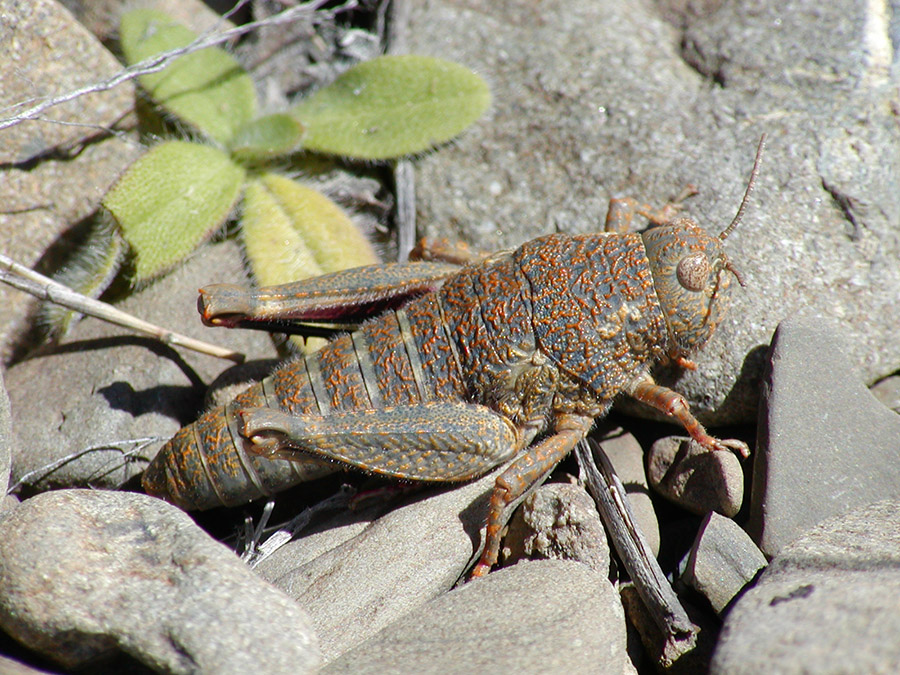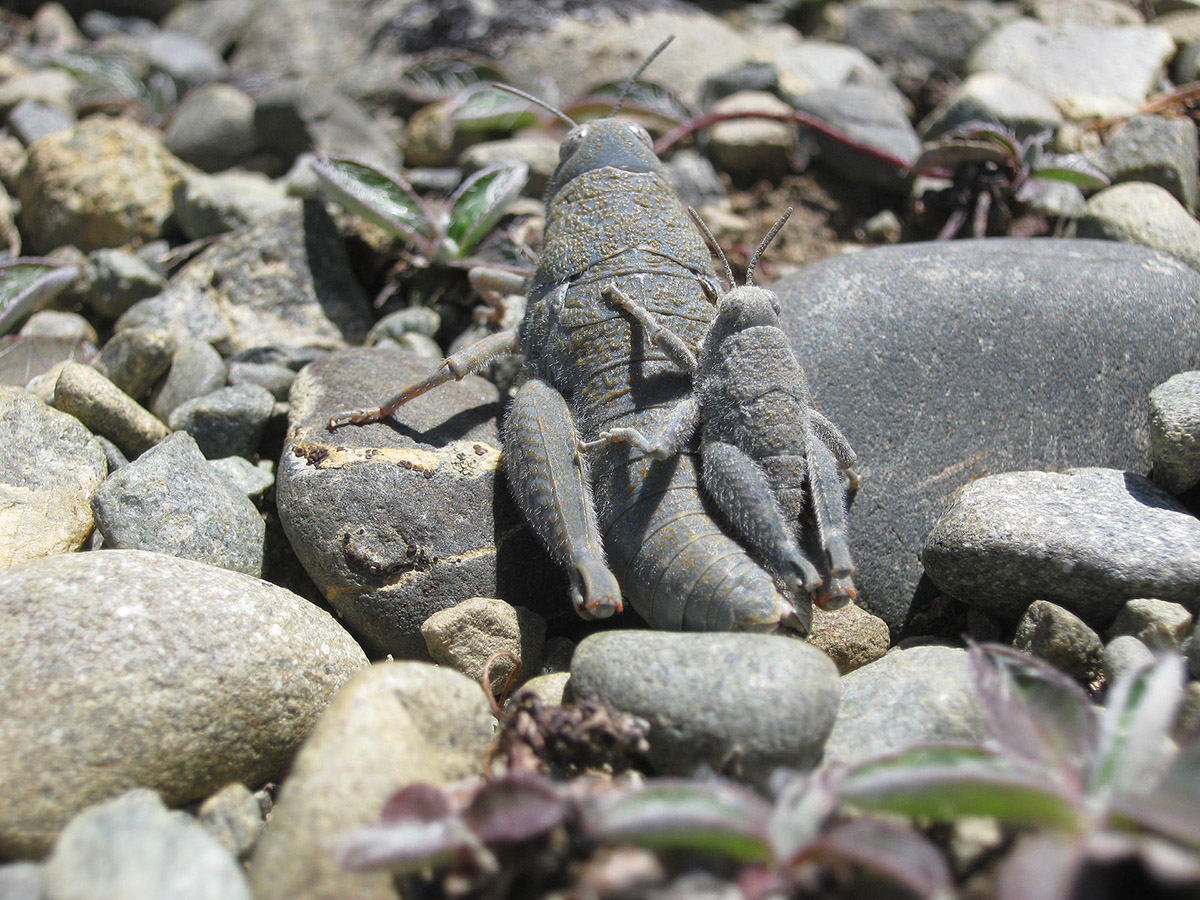Robust grasshopper
Status: Nationally Endangered
If Game of Thrones ever needs to cast a grasshopper in fantasy armor (available in either riverstone grey, black or orange), Brachaspis robustus is a shoo-in.” (North & South, 20 April 2019)
While the Robust grasshopper (Brachaspis robustus), is indeed a grasshopper, they don’t live in grass and they certainly don’t hop from blade to blade. Instead, these amazing little creatures inhabit riverbeds and terraces in the Mackenzie Basin. Highly threatened, it epitomises the vulnerability and beauty of these special habitats that have been disappearing fast (see threats). And while it can hop, it’s more like a leap of faith that ends in a crash-landing—hence the armor plating.
Description
New Zealand’s largest lowland grasshopper, it\’s cryptic (hard to see) amongst the stones and boulders of its specialised habitat, using camouflage as a defence against predators. Males (18-22mm) are much smaller than females (38-44mm). Like many NZ grasshoppers, they’re flightless (wings are around 1-2mm). Three colour morphs are known: ‘Grey’ (~60%), ‘Orange’ (~40%) and ‘Black'(<0.5%). It lives for ~ 2years. Eggs are laid from early summer to mid-autumn. Adult females probably lay two egg batches a season, each containing between 20–32 eggs. Most nymphs emerge in mid-summer, which seems to indicate the eggs require a winter period in order to develop fully. The nymphs then overwinter, often surviving temperatures well below 0°C, and reach adulthood the following summer.
It’s found only in the Tekapo, Pukaki and Ohau river catchments in the Mackenzie Basin, from Lake Benmore in the south to the upper Fork Stream in the north.


Conservation efforts
Two projects are currently underway in the MacKenzie basin, where a specially designed 500m perimeter fence was installed in partnership with Te Manahuna Aoraki to exclude hedgehogs, rodents, and
mustelids.
- The robust grasshopper project, which is assessing methods for species management and monitoring techniques. This project includes a University of Canterbury PhD thesis
- An MSc project to identify whether robust grasshoppers increase in population size following exclusion of predators, due to be completed in 2020
More information & research
- 2019: How a remarkable native insect is being saved (North & South)
- 2019: Saving the Robust grasshopper (Canterbury Museum)
- 2018: Schori et al;Evidence that reducing mammalian predators is beneficial for threatened and declining New Zealand grasshoppers New Zealand Journal of Zoology
- 2017: Schori: The robust grasshopper (BRaid seminar)
- 2016: Schori:
Robust grasshopper population monitoring methods and conservation translocation (BRaid workshop) - 2015 Critter of the week (Radio NZ)
- iNaturalist
- See Ecology/invertebrates for further information and references
- See also Ecology/further information and references
